Note: This article is about fully electric vehicles. Not hybrids.
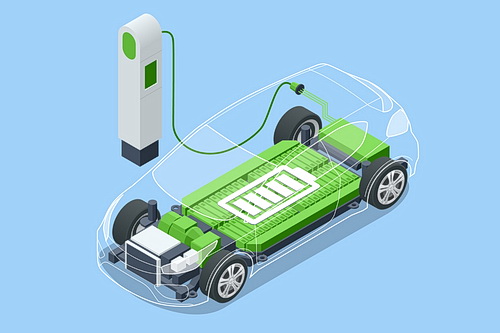 Photo iStock, Credit: Golden Sikorka
Photo iStock, Credit: Golden Sikorka
Electric Vehicle Costs
Sales
How Much Do EVs Cost to Buy?
Electrical vehicles can run from $30,000 on the low end to over $100,000 on the high end, with Tesla being the major seller with 1,917,450 vehicles sold since it was first introduced.
Elon Musk who owns Tesla brought in a revenue of $53.8 billion for the year 2021. Aside from Tesla, other manufacturers jumped on the bandwagon to make electric vehicles such as BMW, Nissan, Chevrolet, Ford, Volkswagen, and Kia.
2023 Update: Most EV buyers are heading to Tesler over other manufacturers. According to one dealership, they had to lower the price of their EVs because “They are not selling”.
Charging
How Much Does It Cost to Charge an EV from Your House?
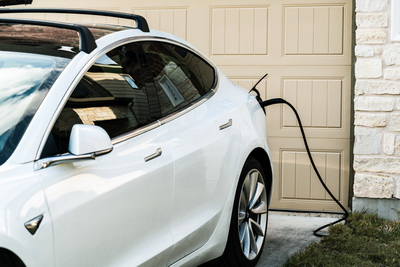
According to our calculations, it can cost between $10 – $15 per charge to the recommended 80% when your EV is near zero battery capacity, which equates to 230 miles. That is less than 1/2 the cost of what a conventional gas car would cost to drive the same distance. If your battery has more than zero juice, your electrical cost would be even less to reach the 80% – 230-mile range.
How Much Does It Cost to Charge an EV Outside of Your House?
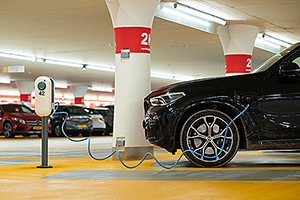
The cost to charge your EV depends upon several factors, but in general, expect to pay between $20 – $30 for a full charge, which is much better than a conventional gas car expense, since you can add a good 200 – 300 miles back to the battery. Try getting 200 miles for $30 on a conventional car!
How Much is a Vehicle Inspection?
Since many components of a gas car (Engine, fuel injection, oil, etc.) are not in an EV, the diagnosis that is done is much less; subsequently, the average price for an EV inspection is about $10.00, compared to a conventional car, which would be around $30.00 or more.
Electrical Charging an EV Tech
What is the Difference Between Level 1 and Level 2 Chargers?
There are some major differences. A level 1 charger can be plugged into any 110-volt outlet, but charges at about twice as long as a level 2 charger, which connects to a 220/240-volt outlet. If you recall our article on voltage, it is the amount of current that is ‘pushed’ out. Like a water faucet. The more you move the lever, the faster the water comes out. So a level 1 charger that uses 110 volts, the amount of current is, on average 15 amps. A level 2 charger can draw up to 60 amps, depending on the size of the breaker in the house.
Why are There Two Batteries in My EV?
Power Battery: The main battery is the EV battery, technically called the traction battery because it is the battery that provides the power to drive the car.
Auxiliary Battery: This battery is the standard ‘starter12-volt battery’ that we see in all cars (conventional gas and EVs). The battery is responsible for powering auxiliary systems such as lights, radios, climate control, and all other electronics in the vehicle. Most importantly, it is the battery that is used for starting the car.
If you are in an EV and you press the Start button but nothing happens or weird things occur like flasing internal lights but the cat won’t start, it will be the auxiliary battery that is causing the problem. Not the EV battery.
How is Electricity Sent to the Car’s Devices?
The EV uses a DC-DC converter that converts the higher voltage of the EV battery, called the battery pack to the standard 12 volts needed to power the car’s internal electrical systems.
The actual term for the DC-DC converter is called a step-down converter, as it takes in the higher voltage from the EV and steps down the voltage to 12 volts.
How is the 12-Volt Battery Charged in an EV?
Electric vehicles do not have alternators, which are used to charge the 12-volt batteries in gasoline cars. For EVs, the process is the following:
- When the car is running, the DC-DC converter draws power from the high-voltage battery (the battery that drives the car) and converts it to 12 volts. This power is then used to keep the 12-volt battery charged.
- When the car is plugged into a charger (home or mobile), the charger takes over to power the DC-DC converter, which then charges the 12-volt battery.
How Long Does It Take to Charge an EV?
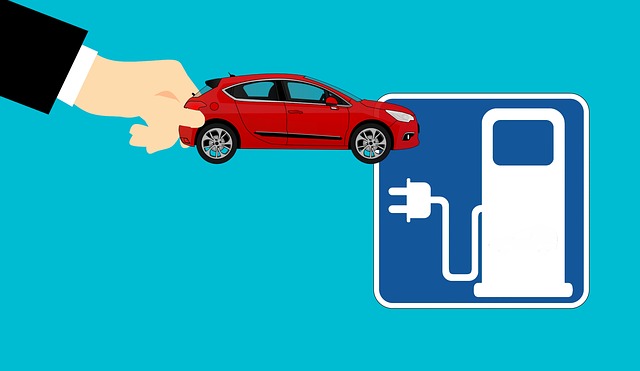
That depends upon the charger you are using. Currently, there are two types available. A Level-1 charger that connects to any 110-volt outlet. This can take over six hours to fully charge an EV’s battery.
Then there is a Level-2 charger. Charging of this type usually takes about three to four hours to reach full charge.
Shortly, Level-3, called high-speed chargers, will cut this charging time in half or more.
Does Fully Charging Mean It Charges Up to 100%?
No, all EV battery manufacturers agree that these batteries should not be charged to 100% because it will cause degradation of the battery in the long run. Charging to 80% is the recommended charging level and is usually set as the default for most EVs.
You can override this setting if you are planning a long trip but it is not recommended to keep it at the 100% charge level continuously.
So when we say we are fully charging our EV, it means that we have charged up to the 80% mark.
What if My Battery Goes to Zero Miles Left and I Am Sill on the Road?
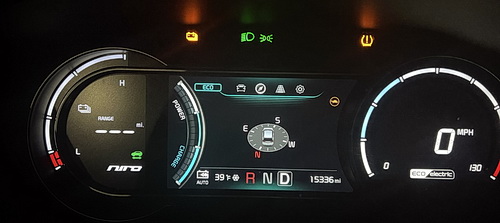
That’s why we recommend not to let your EV battery go below 30%, like the scenario we mentioned above, but we do understand that there are circumstances when this can happen. Chances are you will still have some power left to drive another few more miles. The mileage algorithms are not perfect and only give you an estimate of how much charge you have, but these estimates are fairly accurate as far as estimates are concerned,
When you see that warning notice on your dashboard, you should immediately shut down all accessories (radio, air conditioner or heater, phone charging, etc.) so that the least amount of power is being drained from the battery, but you should look for a charging station immediately!
The Weather and the Seasons
Do the Seasons Have an Effect on EV Batteries?

Yes, especially in winter. If the temperature goes below 40 F degrees, expect the mileage to diminish faster. Case in point: It was late November. A couple was leaving Manhattan to go to Long Island. Their GPS said it was a 27-mile drive and 45 miles were left on the vehicle, but halfway through their drive, the mileage counter dropped to 10 miles. Fortunately, they found an EV station along the way and were able to charge the car.
This is why we always suggest not letting your EV battery get that low. Once you see it is below 30%, you should charge it.
Can I Charge My EV in the Rain?
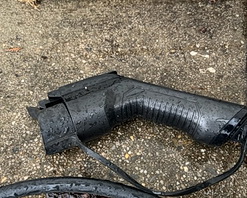
If the charger has protection such as non-conductive shielding at the port section, then you should be ok if the charger is left outside in the rain.
Check with your charging manufacturer to determine if your home charger is rainproof, but as with all electrical devices, it is always safer to keep these chargers away from anything wet.
Travel and Long Trips
How Many Miles Can I Get on a Full Charge?
Most EVs in the medium-cost range get about 230 miles on an 80% charge. The manufacturers do not recommend charging to 100% as it decreases the integrity of the battery.
Some of the higher ones, such as the Tesla Model S can get up to 394 miles when the batter is at full capacity. On the other hand, a Kia Niro, a great EV with excellent reviews will get about 253 miles on a full charge. And the 2023 Chevy Silverado will have a 200 kWh battery that can take you a good 400 miles before recharging.
Can I Go on Long Rides With My EV?

You can but it is not advisable at this time; however, if you are bent on taking long drives with your EV, it is highly recommended that you plan your trip with charging along the way as your main priority. Check the highway’s rest areas to see if they have charging stations, but be aware that if you do have to charge your EV during your trip, you may have to stay a while, possibly a good three to four hours at each station.
As President Biden’s infrastructure bill goes into effect, you will see more and more charging stations appear, especially along the highways, but remember, charging an EV is not like pumping gas into a car. You will be there for a few hours each time you charge your vehicle.
Of course, you don’t have to fully charge your car. If you could just add another 100-150 miles, that would cut down the time spent waiting.
Either way, plan so that you can find places to go while the car is charging. Some of these locations may have a restaurant where you can have a long dinner or some towns may have charging ports on the street or in garages, or shopping mall parking lots. As you wait you can traverse through the many stores to kill time.
Then there are the hotels. Call ahead to find out if they have EV portals and if not, where is the closest one?
Shortly, more and more charging stations will be added along the highways and private locations such as housing and hotels. Additionally, in Biden’s Build Back Better plan, he has allocated $5 billion to increase the US infrastructure with over 500,000 new EV portals, and that doesn’t include the additions by private enterprises.
Tell Me More About the Mileage Estimates
A rideshare driver was on his way home from his last drop-off in Manhattan. He previously didn’t realize that the drive for this customer was further out than he thought and he saw that he had only 35 miles left on his battery.
Since he lived just outside the city limits in Long Island, he was sure that he would be able to get home before the battery capacity runs out. He was wrong. And this was during the warmer weather.
When the driver was on the highway, only 13 miles from his home, a warning light came on and said he had zero miles left to drive. What was saying 13 miles all of a sudden went to zero, meaning he had no more battery life in his car.
What happened to that missing 13 miles can only be explained by the fact that the mileage algorithms keep refreshing and new estimates materialize. So it is strongly advised to monitor your mileage with a give or take of 10- 15 miles either way. Thinking this way may help you decide when you should make your next charge.
This is especially true for winter driving as we have stated.

Plan Ahead!
If you are going to purchase an EV, plan out your expenses first against what it would cost for a gas car. Then plan out what you plan to do with the car. Will you be using it for local driving or going to work every day or is your main purpose going on long trips? At this current time, we would recommend that you purchase your EV for local driving or work. Whatever you choose, enjoy your ride!
What are the Advantages of Owning an Electric Car?
Of course, the main reason for owning an EV is the savings you get by not having to gas up your car, especially at the prices today. Additionally, EVs don’t have a combustion engine, so there are fewer parts to become defective during your ownership. EVs are said to help with the environment as well and they run very quietly.
What are the Disadvantages of Owning an Electric Car?
The initial expense of purchasing one is what keeps many who would otherwise buy one. Then there is the cost of having a 220-240 volt connection installed into your home circuit box, which can run from $600 to $1000.
If you live in an apartment, you may run into an additional issue if the building or development you are in does not have an EV portal available, but more and more locations and communities are having EV stations installed such as shopping malls, public garages, and of course, many car dealerships.
Do EVs Need Oil Changes?
No. There are no combustion gas engines in electric vehicles, but cars with gas engines need maintenance. The oil used to keep the pistons running smoothly in the chamber of the engine needs to be changed every six months or 3,000 miles. Since no gas engine runs the car, no oil change is needed.
